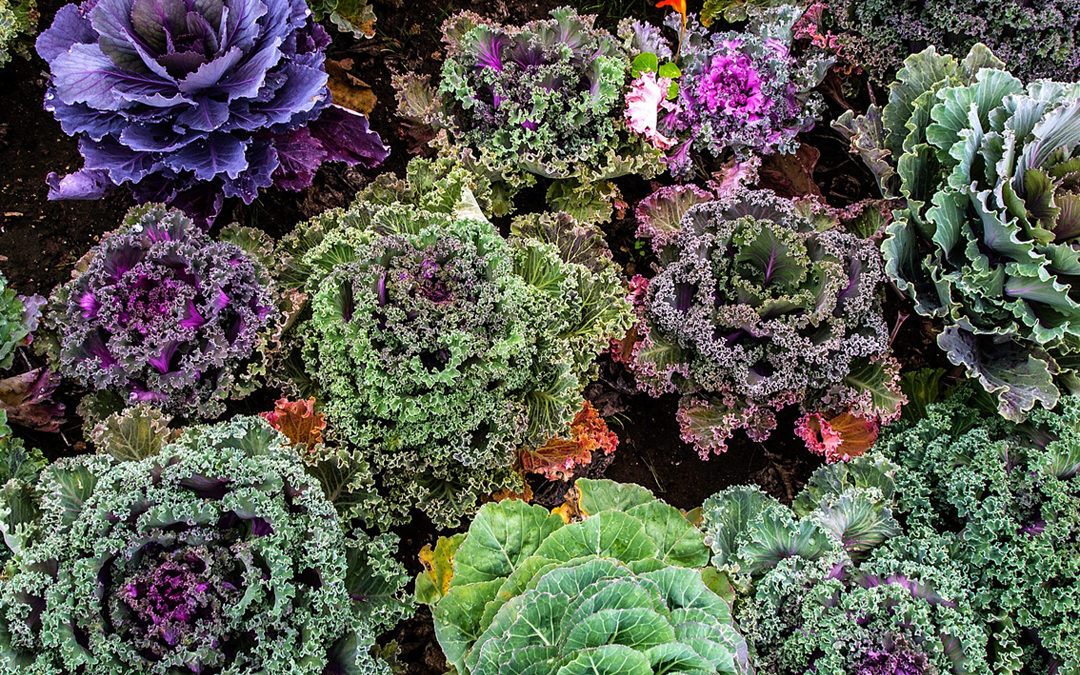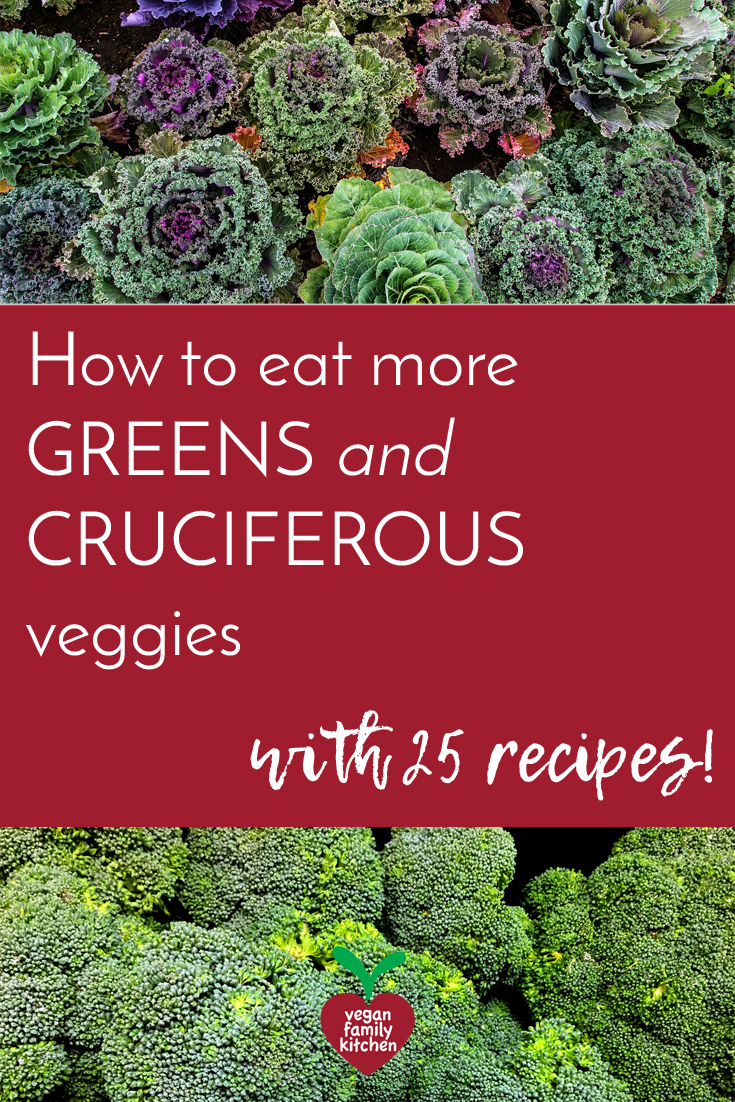Do you eat enough green and cruciferous vegetables on a daily basis? Chances are, you don’t. Even eating vegetables in general is challenge for most: less than 10% of Americans consume the recommended 2 to 3 cups daily. Within a few percentage points, these numbers are true even among the richest among us. (You can learn more straight from the CDC report.) The stats for green and cruciferous vegetables are even worse: only around 11% of American’s vegetable consumption consists of greens or cruciferous (excluding lettuce, which sadly offers little nutrition). Moreover, only 11% of youth in the United States ate dark green vegetables on a given day. (Were your kids among them?) Yet we know that greens “offer the most nutrition per calorie” (per Dr. Greger in How Not to Die) and offer preventive properties against cancer. Cruciferous veggies such as broccoli, kale and cabbage are also nutritional powerhouses, helping prevent the progression of heart disease and cancers alike. Furthermore, many such vegetables are good to great plant sources of calcium and/or iron, nutrients that vegans (and their mothers) often worry about. Knowing what we know about the health benefits, how can we change our habits to eat more greens and cruciferous vegetables?
First, set a target
How many portions of green and cruciferous vegetables should we be eating on a daily basis anyway? The amounts are less daunting than one might think, but there are different opinions out there so let’s review what my favorite experts have to say on the topic.
Let’s start with registered dietitians. Vegan diet authorities Brenda Davis and Vesanto Melina, in their excellent book Becoming Vegan (which I warmly recommend as the go-to primer on vegan nutrition), approach the topic from the perspective of making sure we get enough specific nutrients, notably calcium. They set the bar at 5 servings or more of vegetables per day. They suggest that at least 2 of those vegetable servings should consist of calcium-rich greens. That means that, from those two RDs’ perspective, broccoli is great, but spinach doesn’t count toward the 2 recommended portions due to the presence of oxalates that lower the calcium absorption rate. From this angle, 1 cup raw kale in a salad for lunch (or in a morning smoothie), combined with 1/2 cup steamed broccoli at dinner, would do the trick.
Dr Michael Greger, of nutritionfacts.org fame and author of How Not To Die, appears less concerned about specific nutrients like calcium. Instead, he focuses on health promotion more generally. He also recommends a minimum of 5 portions of vegetables per day as part of his “Daily Dozen.” He is, however, is a little more specific in his recommendations: at least 1 daily serving of cruciferous vegetables, plus 2 of greens and 2 other vegetables (with good words in for orange and red ones such as yam/sweet potatoes). I guess you get bonus points if some of the green vegetables you eat are also cruciferous.
The good news is that those targets are totally achievable! Add a big handful of baby kale to your morning smoothie, eat a panini with a generous layer of arugula-walnut pesto for lunch (amazing with roasted vegetables), sauté some shredded red cabbage as a side with dinner and voilà! You have hit multiple items on your checklist for the day… while enjoying delicious meals.
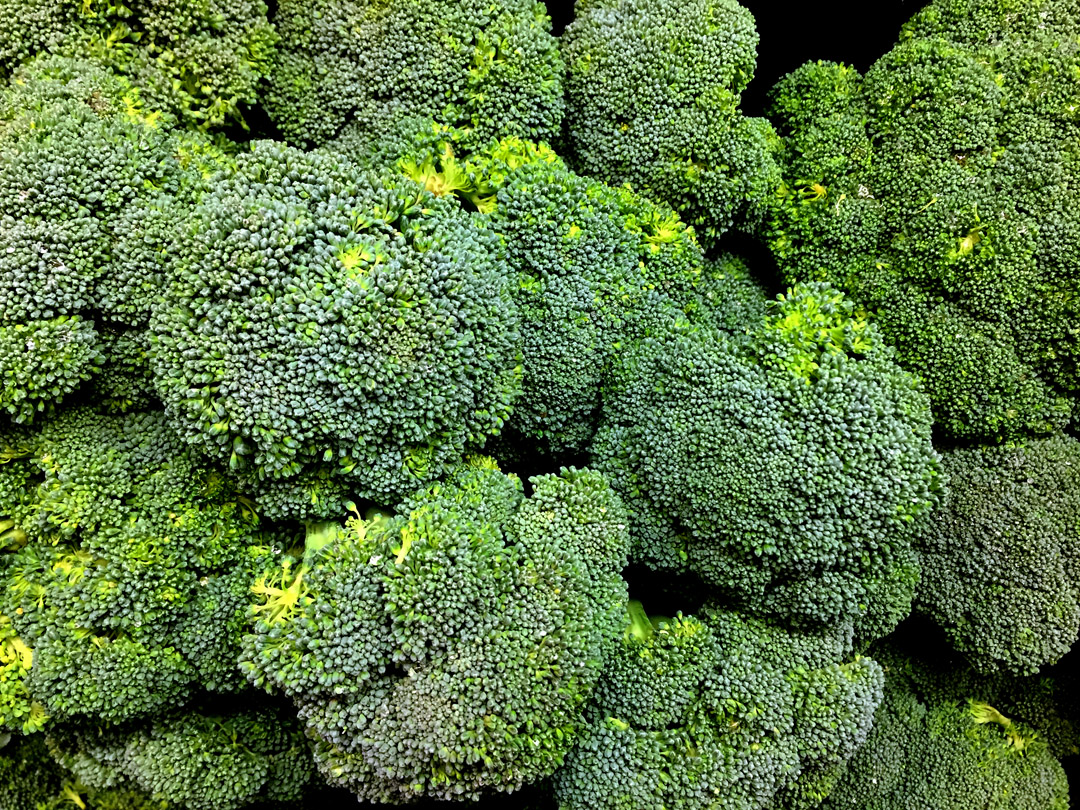
Don’t be so bitter! How to improve the taste
Many children and, to be fair, almost as many of their parents, have listed green vegetables on their “will not eat” list. The bitterness of greens and cruciferous vegetables makes them a harder sell for us humans, conditioned as we are to search for high-energy, sugary foods. Broccoli in particular often appears as a culinary pariah in pop culture. (Remember the “Congratulations San Francisco! Now you’ve ruined pizza!” scene from Inside Out?) Personally, I never quite understood this because I have been a lifelong broccoli fan – especially the stems. (I did have a texture issue with the florets but eventually got over it.) My son, when he was just starting to talk, also had a temper tantrum at the produce store when he desperately screamed “bwowowowowli” and I just couldn’t figure out what he so dearly desired. I freed him out of the stroller straps and he stretched on his tippy-toes to grab a head of broccoli that I had to wrench out of his arms when we made it to the cash register. (Was it genetics or breastfeeding that spared him from typical childhood aversion to bitter foods?)
The good news is that our palates can adjust.
“There’s a phenomenon called flavor-flavor conditioning in which you can change your palate by linking a less pleasant flavor (for instance, sour or bitter) with a more pleasant one (say, sweet). For example, when researchers tried adding sugar to sour grapefruit juice, people liked it better. No surprise. But within a few days, the study subjects began to like even unsweetenedi grapefruit juice more than they did before the experiment started. in fact, this reconditioning of the palate lasted for at least weeks after the sugar was removed.” M. Greger in How Not To Die, p. 315.
So go for it! Add a spoonful of sugar to your coleslaw dressing to help the cabbage go down. You don’t need to do it forever! In a given kale salad dressing, you might start by adding 1 tablespoon of maple syrup, or blend in a Medjool date. Next time you make the salad, aim for 2 teaspoons, or half a date. Then 1 teaspoon. (Personally, that’s where I stop – but if you are trying to cut sweeteners entirely I guess you could try that.) A little maple syrup also makes a delightful treat out of roasted Brussels sprouts – another unfairly detested veggie.
Worried about giving sugar to your kids? The lifelong benefits of developing a taste for greens will far outweigh the damages inflicted by a few extra grams of sugar at age 3. And remember that you are supposed to reduce the dosage of sweetener over time, as bitter flavors will become tolerated and even enjoyed.
How to best prepare greens and cruciferous vegetables
The best way to prepare greens is the way that will make you feel most like eating them! This said, once you have gotten the hang of adding them to your daily menu, you can take advantage of these tips to get the most nutritional bang for your buck.
- Raw is always your best choice but keep things in perspective: just make up for the nutrients lost in steaming, sautéing or roasting by… having a few more bites of greens.
- Other than raw, moist cooking methods like steaming and microwaving preserve the most nutrients.
- To increase nutrient absorption, add a source of fat in salads. No need for a super-oily dressing: a few nuts or seeds do the trick!
- Finding raw kale too fibrous and chewy? You need to massage it more! I find the word “massage” a bit too gentle-sounding here. I prefer the wringing method: I wash my kale leaves under running water and lay them on a clean tea towel to pat them dry. Then I roll the towel super tightly and wring as hard as I can. Done!
- Smoothies, by cutting your greens into really, really small bits, helps you get the most nutrients out of them. What a great way to start the day! Learn more here…
- If you plan on cooking your cruciferous vegetables, or if you are using the frozen type, try the “hack and hold” method. Chop your veggies before you do anything else from that recipe, wait half an hour and then cook them. Apparently, it greatly increases the cancer-fighting benefits you’ll get from eating those veggies. Curious to read more? Head over to nutritionfacts.org for the video.
- Don’t discard the stems! Why waste anything? When making soups and stews, make sure to add kale, collard greens, swiss chard or another dark leafy green. Start by ripping the leaves off the stems, and set aside. Then slice the stems thinly and sauté at the same time as the onion. Chop the leaves and add in the last 5 minutes of cooking, they will simply wilt and keep more nutrients than if you cooked them for the whole time.
Breakfast, lunch and dinner
- Breakfast: Start with a green smoothie, or add a big handful of finely chopped greens to your tofu scramble. You can mix kale into pancake batter, too! (Call them “Hulk pancakes” for the kiddos.)
- Lunch: there’s nothing like a fresh-grilled panini with roasted vegetables and pesto. I add white beans plus lots of herbs and greens to my pesto, along with walnuts. It makes it a full meal! Of course, you can also eat a big salad with lots of greens (kale, spinach, arugula or a mix), a scoop of whole grains or pseudo-grains (farro, quinoa, wheatberries, couscous…), chopped vegetables and chickpeas, with a few pieces of diced fruit and a sprinkle of nuts, seeds or sprouts on top. In fact, you might be able to fit your 5 servings of daily veggies right there.
- Dinner: You can add greens – whole, chopped or blended, raw or cooked – to practically every meal you make. Make sure to pull some out of the fridge every time you set out to cook so you don’t forget.
These recipes will help you eat more greens and cruciferous vegetables
With so many delicious and nutritious options, there’s no excuse not to eat some today!
Smoothies
When your blender breaks down the greens, their nutrients get absorbed more easily! Check out the science summary by Dr. Greger, along with a standard green smoothie recipe. My favorite recipe is: about 1 cup chopped pineapple, two big handfuls of mixed baby greens (usually kale and spinach), 1 cup water, 3 Tbsp hemp seeds, and 2 dried dates.
Raw in salads and bowls
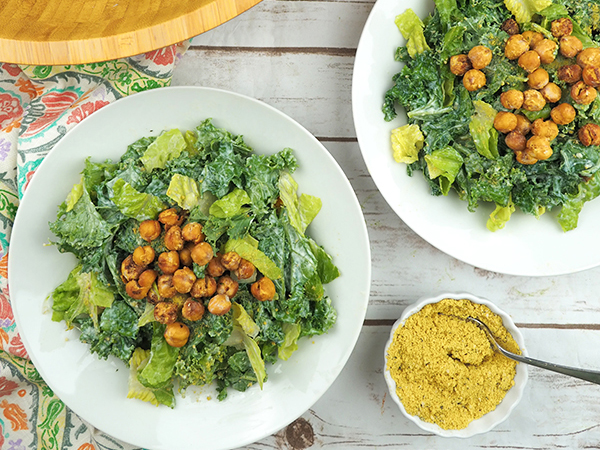 Dianne’s Vegan Kitchen’s Kale Caesar Salad
Dianne’s Vegan Kitchen’s Kale Caesar Salad
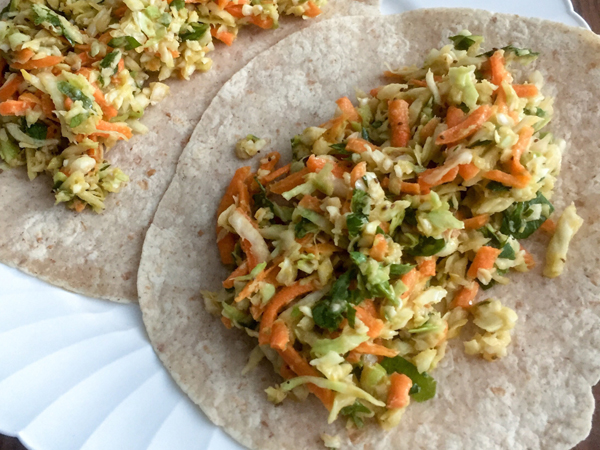 Never made coleslaw before? Learn with the Basic coleslaw recipe from Eat the Vegan Rainbow
Never made coleslaw before? Learn with the Basic coleslaw recipe from Eat the Vegan Rainbow
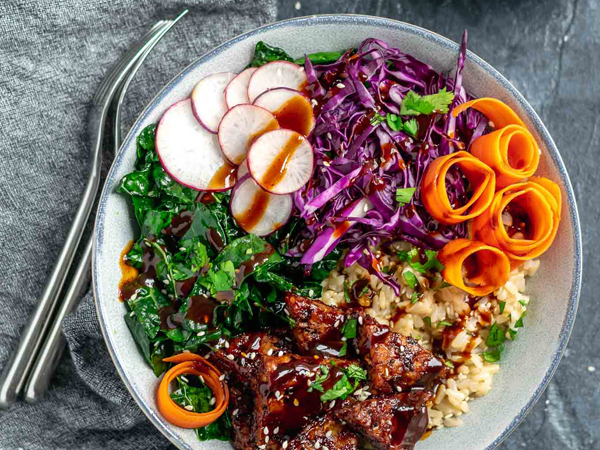 What about a Hoisin Glazed Tempeh Bowl? From The Curious Chickpea
What about a Hoisin Glazed Tempeh Bowl? From The Curious Chickpea
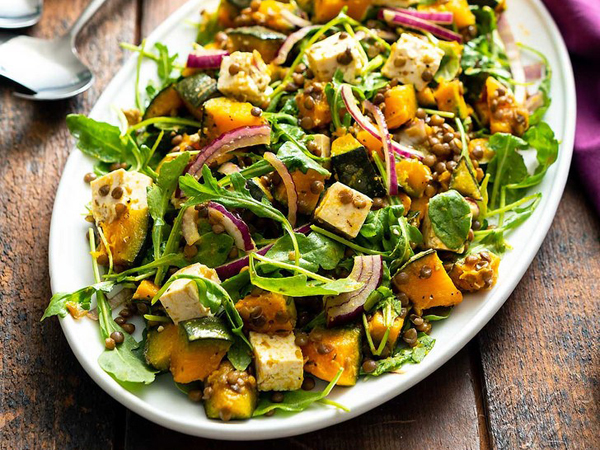 Lots of arugula in this warm salad of Kabocha Squash and Vegan Feta Salad from Vegan Yack Attack
Lots of arugula in this warm salad of Kabocha Squash and Vegan Feta Salad from Vegan Yack Attack
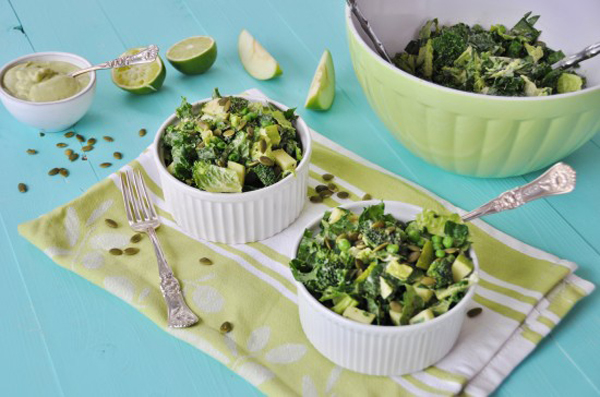 Veganosity’s Green Garden Salad
Veganosity’s Green Garden Salad
Pesto deserves its own category!
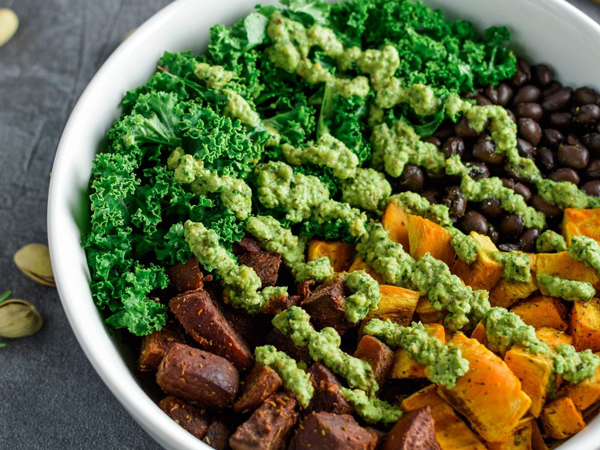 Pistachio pesto! On top of this Sweet potato and beet bowl by Plant Based Scotty
Pistachio pesto! On top of this Sweet potato and beet bowl by Plant Based Scotty
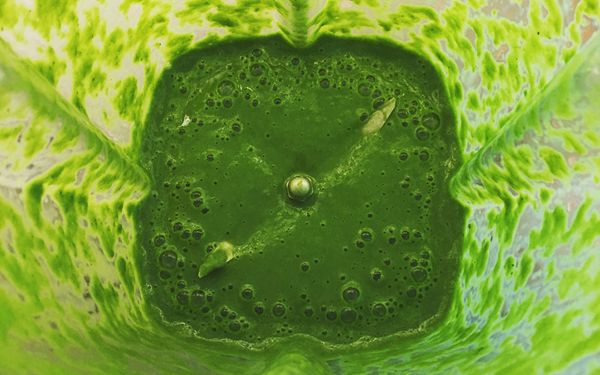 Vegan Family Kitchen’s super flexible pesto recipe – for all those greens!
Vegan Family Kitchen’s super flexible pesto recipe – for all those greens!
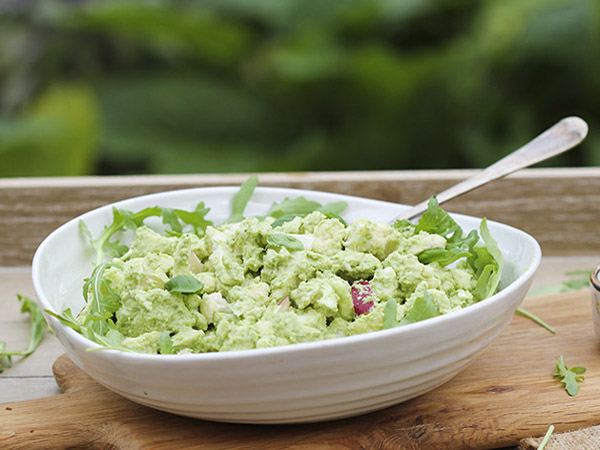 Trinity’s Kitchen – Vegan Cashew Lime Pesto Cauliflower Salad, 2 ways
Trinity’s Kitchen – Vegan Cashew Lime Pesto Cauliflower Salad, 2 ways
Cooked in stews, curries, soups, sauces, and more!
When cooking, try the “hack and hold” method. According to literature reviewed by Dr. Greger,
 Look at those cute Brussels sprouts! Vegan Yack Attack’s Grilled Tofu Miso Noodle Soup
Look at those cute Brussels sprouts! Vegan Yack Attack’s Grilled Tofu Miso Noodle Soup
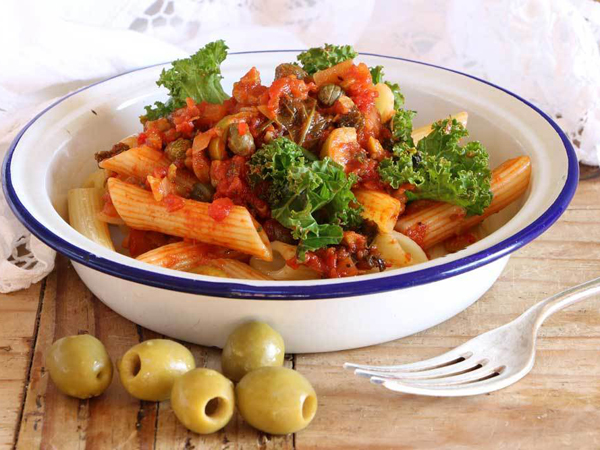 Speedy pasta alla Puttanesca with kale
Speedy pasta alla Puttanesca with kale
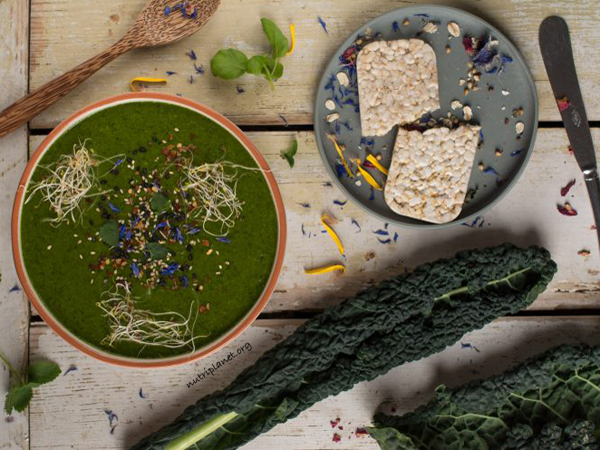 Can it get any greener? Nutriplanet’s Creamy green soup with peas, broccoli and kale. Yum!
Can it get any greener? Nutriplanet’s Creamy green soup with peas, broccoli and kale. Yum!
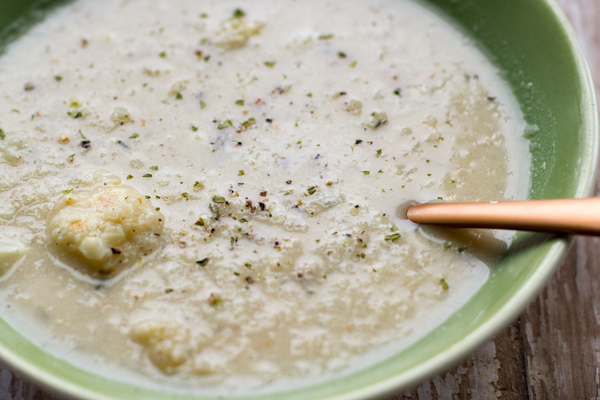 Roasted cauliflower makes a great chowder! Recipe from Intentionally Eat
Roasted cauliflower makes a great chowder! Recipe from Intentionally Eat
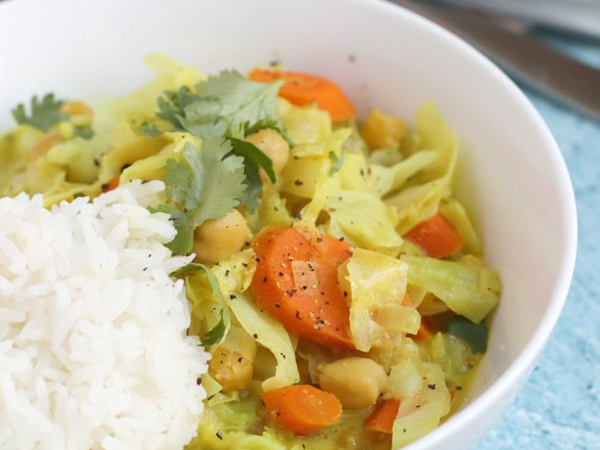 Love curries? Just add cabbage! Cabbage coconut curry from Veggies Save the Day
Love curries? Just add cabbage! Cabbage coconut curry from Veggies Save the Day
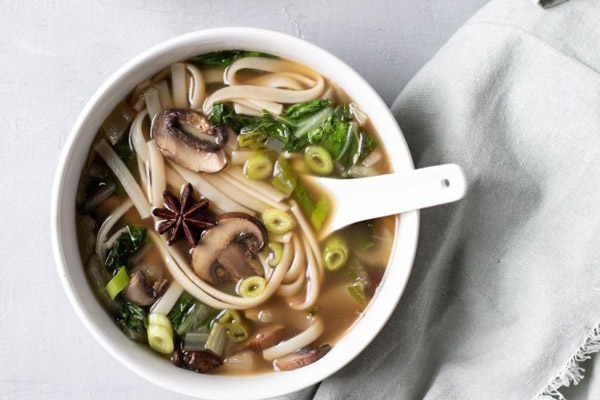 My Quiet Kitchen’s Seared Bok Choy Noodle Soup
My Quiet Kitchen’s Seared Bok Choy Noodle Soup
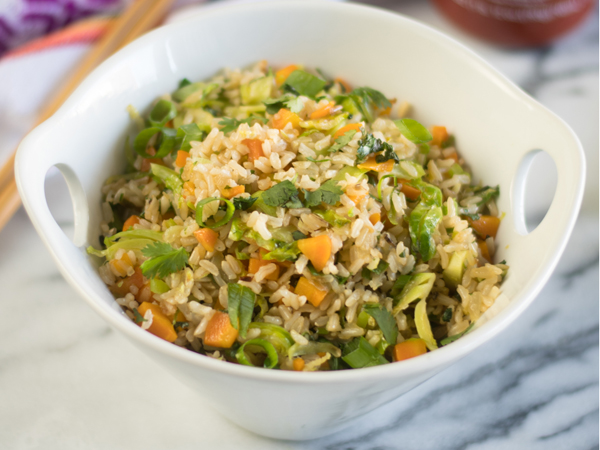 Brussels Sprout Fried Rice, by Thyme and Love
Brussels Sprout Fried Rice, by Thyme and Love
Baked into casseroles
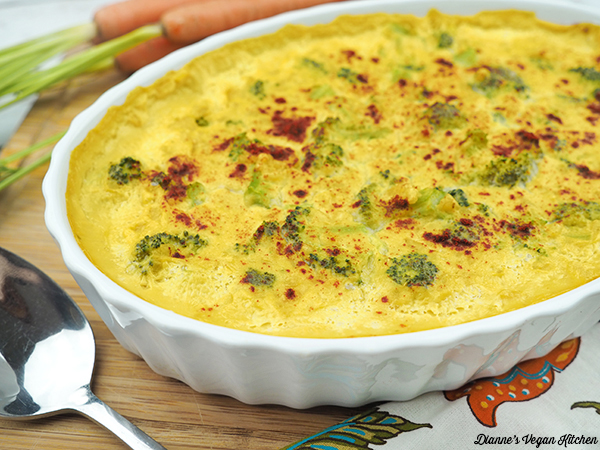 Dianne’s Vegan Kitchen’s Cheesy Broccoli and Rice Casserole (gluten free)
Dianne’s Vegan Kitchen’s Cheesy Broccoli and Rice Casserole (gluten free)
 Just because it’s vegan doesn’t mean it can’t be cheesy! Rhian’s Recipe for Cauliflower Cheesy Gratin
Just because it’s vegan doesn’t mean it can’t be cheesy! Rhian’s Recipe for Cauliflower Cheesy Gratin
Mixed into loaves and burgers
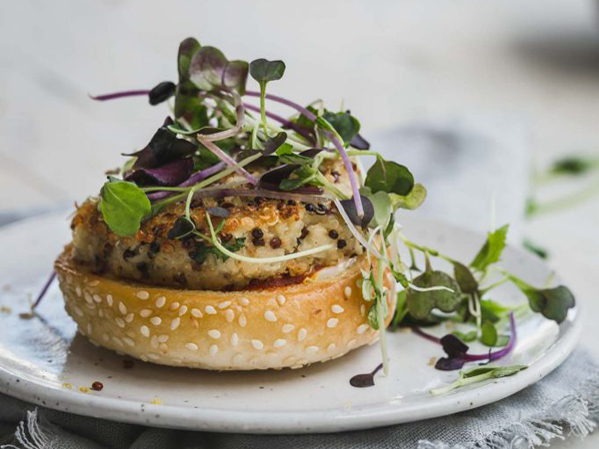 My Goodness Kitchen’s Cauliflower Quinoa Burger
My Goodness Kitchen’s Cauliflower Quinoa Burger
As finger food!
 Vegan Larder’s Cheezy spinach triangles
Vegan Larder’s Cheezy spinach triangles
Steamed, sautéed or roasted
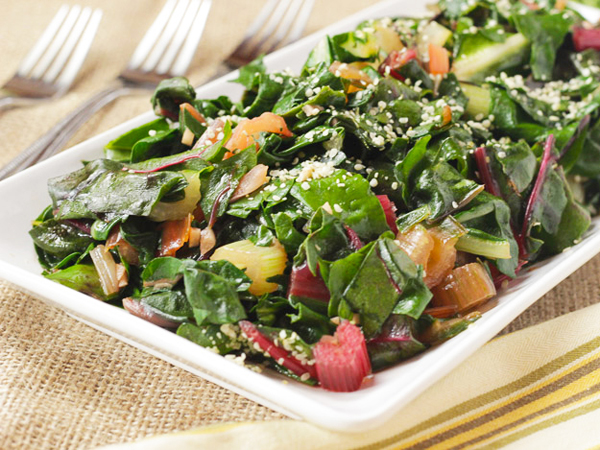 Sautéed greens from the Plant-Based Cooking blog
Sautéed greens from the Plant-Based Cooking blog
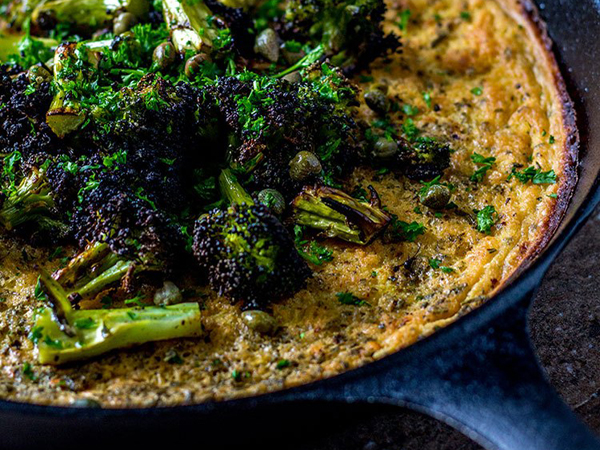 Spectacular! Farinata with charred broccoli from Quite Good Food
Spectacular! Farinata with charred broccoli from Quite Good Food
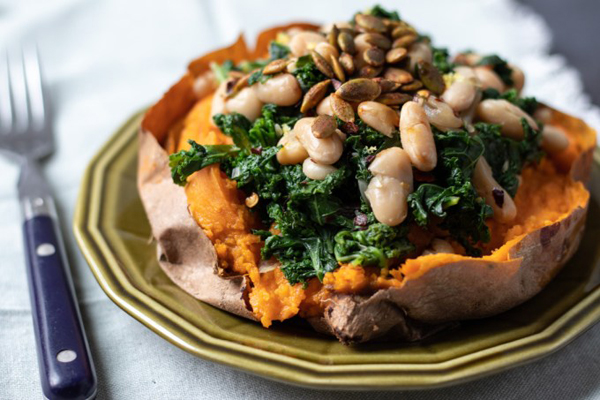 What’s for lunch? Sweet potatoes and lemony kale with white beans, from My Quiet Kitchen
What’s for lunch? Sweet potatoes and lemony kale with white beans, from My Quiet Kitchen
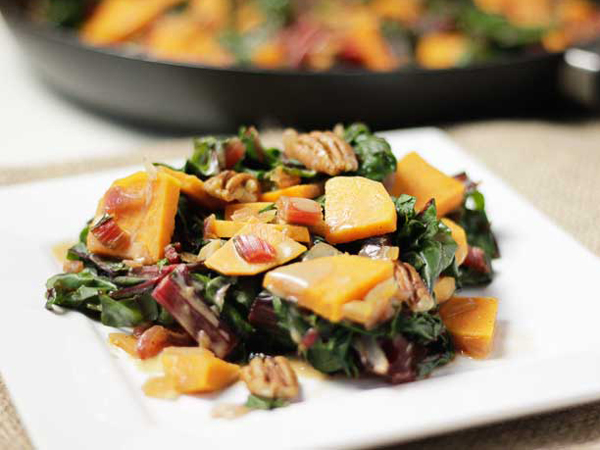 Sweet potatoes with swiss chard and pecans from the Plant-Based Cooking blog
Sweet potatoes with swiss chard and pecans from the Plant-Based Cooking blog
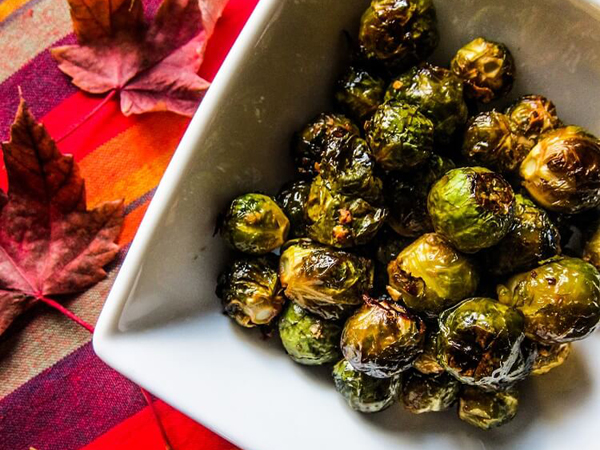 Sweet and Spicy Roasted Brussels Sprouts from the Fragrant Vanilla Cake blog
Sweet and Spicy Roasted Brussels Sprouts from the Fragrant Vanilla Cake blog

